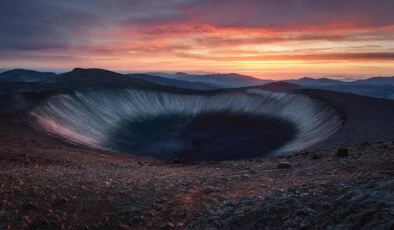
- Hidden Papers
- Mysteries
- Enigma of Dyatlov Pass: What Really Happened?
Enigma of Dyatlov Pass: What Really Happened?

In 1959, a mysterious incident occurred in the dyatlov pass of Russia’s Ural Mountains that has captivated imaginations and fueled conspiracy theories for over six decades. Nine experienced hikers from the Ural Polytechnical Institute embarked on a trek but never returned, their bodies discovered weeks later in disturbing circumstances.
The article delves into the chilling details of this puzzling case, exploring the backgrounds of the hikers, the timeline of events leading up to the tragedy, the unsettling autopsy findings, and the myriad conspiracy theories that have emerged to explain their strange demise.
Who Were the Hikers?
The ill-fated expedition was led by Igor Dyatlov, a 23-year-old radio engineering student at the Ural Polytechnical Institute (now Ural Federal University). Dyatlov assembled a group of nine others, most of whom were fellow students and peers from the same institute.
Background of Igor Dyatlov
As the leader, Dyatlov was an experienced Grade II hiker with ski tour experience. He designed the route for the expedition, which was approved by the Sverdlovsk city route commission. The goal was to reach Otorten, a mountain located 10 kilometers north of the site where the incident occurred.
Other Members of the Expedition
The initial group consisted of eight men and two women, but one member, Yuri Yudin, had to return due to health issues. The remaining members were:
- Yuri Doroshenko (21) – 4th-year student in Radio Engineering
- Zinaida Kolmogorova (22) – 5th-year student in Radio Engineering
- Rustem Slobodin (23) – Graduated in Engineering Technology, working at Enterprise PO Box 10
- Nikolay Thibeaux-Brignolle (23) – Graduated in Civil Engineering, working in the construction department
- Yuri Krivonischenko (23) – Graduated in Construction and Hydraulics, previously involved in cleaning up the Kyshtym Disaster
- Aleksander Kolevatov (24) – 4th-year student in Nuclear Physics
- Semyon Zolotaryov (38) – Graduated from the Institute of Physical Education in Minsk, an instructor at the Kourovka tour base
Their Expertise and Preparation
Each member of the group was an experienced Grade II hiker with ski tour experience, and they were set to receive Grade III certification upon their return. At the time, Grade III was the highest certification available in the Soviet Union and required candidates to traverse 300 kilometers. The route they planned was estimated as Category III, undertaken in February, the most difficult time to traverse.
The Incident: Timeline and Key Events
Expedition Timeline
The Dyatlov group, consisting of 10 hikers, embarked on their expedition on January 23, 1959, departing from Sverdlovsk by train. They arrived at Serov station on January 24 after a journey of 10 hours and 34 minutes, covering a distance of 388 km (241 mi). The group spent 11 hours in Serov before continuing their journey to Ivdel, arriving there around midnight on January 25.
On January 26, the hikers sent their last messages to relatives and friends. Dyatlov was supposed to send telegrams to the sports club and the routing commission, but there is no evidence that he did so. After lunch, the group hitched a ride to District 41, a settlement 40 km (25 miles) north of Vizhay, where they were warmly greeted and treated to a cultural program, including movie screenings. They spent the night at the District 41 dormitory.
The Night of the Incident
- On January 27, the Dyatlov group began their trek toward Gora Otorten.
- On January 28, one member, Yuri Yudin, turned back due to knee and joint pain, leaving the remaining nine hikers to continue the expedition.
- Diaries and cameras found at their last campsite helped track their route up to the day preceding the incident.
- On January 31, the group arrived at the edge of a highland area and began preparing for climbing. They cached surplus food and equipment in a wooded valley for their return trip.
- The next day, February 1, the hikers started moving through the pass but lost their direction due to worsening weather conditions and snowstorms. They deviated west toward the top of Kholat Syakhl.
- Realizing their mistake, the group decided to set up camp on the slope of the mountain instead of moving downhill to a forested area that would have offered better shelter.
Discovery of the Tent
Before leaving, Dyatlov had agreed to send a telegram to their sports club upon their return to Vizhai, which was expected no later than February 12. When no messages were received by that date, the relatives demanded a rescue operation on February 20.
On February 26, searchers found the group’s abandoned and badly damaged tent on Kholat Syakhl. The tent was half-torn down, covered in snow, and all belongings were left behind. Investigators said the tent had been cut open from the inside. Nine sets of footprints, some barefoot or in socks, led down to the edge of a nearby wood, 1.5 km (0.93 mi) to the north-east, before being covered by snow after 500 meters (1,600 ft).
Details of the Autopsies
The autopsies of the Dyatlov hikers revealed disturbing details and anomalies that added to the enigma surrounding their deaths.
Injuries and Conditions of the Bodies
The bodies displayed a range of injuries, from severe trauma to peculiar conditions. Yuri Doroshenko had pulmonary oedema, pulmonary contusion, and burns on his foot and right temple, indicating blunt trauma. Yuri Krivonischenko had bitten off a piece of his own knuckle, suggesting a desperate attempt to stay awake or stifle cries, and had third-degree burns that could not have occurred if he had fallen asleep alive. Igor Dyatlov was vomiting blood, and Zinaida Kolmogorova had a baton-shaped bruise on her waist.
Rustem Slobodin suffered a fracture of the frontal bone and hemorrhages in the temporalis muscles, likely caused by a blunt object, leading to a loss of coordination that hastened his death from hypothermia. The bodies of Lyudmila Dubinina and Semyon Zolotaryov displayed similar patterns of injuries, including multiple rib fractures and hemorrhaging into the cardiac muscle and pleural cavity, indicative of a significant force, akin to a car crash.
Anomalies and Bizarre Findings
Some of the bodies exhibited bizarre injuries and conditions that defied explanation. Dubinina was missing her tongue, eyes, part of her lips, facial tissue, and a fragment of her skull bone, while Zolotaryov had lost his eyeballs. Aleksander Kolevatov was missing his eyebrows. These injuries were initially deemed post-mortem, caused by the bodies’ location in a stream.
However, the positioning of Doroshenko’s body did not match the livor mortis on his back, suggesting post-mortem manipulation. The orderly arrangement of the bodies and the absence of obscene markings led investigators to believe that whoever interacted with the bodies last felt compassion and respect for the victims, rather than being the perpetrators.
Radiation Levels
Notably, some levels of radiation were found on one victim’s clothing, adding another layer of mystery to the case. The source and significance of this radiation remain unclear, with theories ranging from accidental contamination to more sinister explanations.
Overall, the autopsy findings presented a perplexing array of injuries, conditions, and anomalies that have fueled countless theories and speculations about the true cause of the hikers’ demise in the dyatlov pass.
Leading Theories: From Avalanches to Yetis
The dyatlov pass incident has spawned numerous theories attempting to explain the bizarre circumstances surrounding the hikers’ deaths. These theories range from the plausible to the outlandish, each offering a unique perspective on the enigma.
Avalanche Explanation
One of the leading theories, proposed by Russian authorities after reopening the investigation in 2019, suggests that a slab avalanche could have caused the tragedy. Prosecutor Andrei Kuryakov theorized that a slab of snow might have slid over the hikers’ tent, prompting them to flee in panic without grabbing their boots. They may have sought shelter in a nearby forest, started a fire, and dug a snow den, which could have collapsed, causing the severe injuries found on some bodies. Scavenging animals might have accounted for the missing eyes and tongue.
In 2021, Swiss researchers Johan Gaume and Alexander M. Puzrin used mathematical models to test Kuryakov’s theory. They concluded that a slab avalanche was indeed possible given the tent’s location and weather conditions, lending credence to this explanation. However, the exact sequence of events remains speculative.
Secret Military Tests
The discovery of radiation traces on some hikers’ clothing fueled theories of secret military testing in the area. Some speculated that the group might have inadvertently wandered into a weapons testing zone, becoming victims of parachute mines or radiological weapons. The internal injuries sustained by some hikers were consistent with the effects of parachute mine explosions, and the radiation traces seemed to support this theory.
However, counter-arguments suggest that the radiation could have come from the hikers’ own gas lanterns, which contained thorium, a radioactive element. Additionally, the patterns of injuries were not uniform across all bodies, casting doubt on a single, catastrophic event as the cause.
Paranormal and Unsolved Mysteries
In the absence of a definitive explanation, numerous paranormal and outlandish theories have emerged. These range from attacks by the mythical Yeti or local tribesmen to alien abductions and gravitational anomalies. While these theories may capture the imagination, they lack substantial evidence and are often dismissed by experts.
One theory proposed by Russian investigative journalist Svetlana Oss suggests that local hunters, under the influence of psychedelic mushrooms, might have attacked the hikers. Another theory posits internal conflicts within the group, leading to violence and the subsequent cover-up of a murder.
However, the coroner’s findings indicated that no human being could have inflicted the level of damage observed on the bodies, further complicating the mystery.
As the dyatlov pass incident remains unsolved, these theories continue to captivate the public imagination, each offering a unique perspective on the enigma. While some explanations seem more plausible than others, the true cause of the hikers’ deaths may forever remain shrouded in mystery.
Conclusion
The Dyatlov Pass incident remains one of the most perplexing and intriguing mysteries of the 20th century. Despite numerous investigations and theories, the true cause of the hikers’ tragic demise continues to elude us. The chilling autopsy findings, the bizarrely damaged tent, and the inexplicable radiation traces have fueled speculation and captured the imagination of researchers and amateur sleuths alike.
While some theories, such as the avalanche explanation or the involvement of secret military tests, seem more plausible than others, the lack of conclusive evidence means that the dyatlov pass enigma will likely remain unsolved. The conflicting narratives and the sheer complexity of the case have ensured that this historic incident will continue to captivate and perplex generations to come, serving as a reminder of the enduring power of unsolved mysteries and the human drive to unravel the unknown.

























